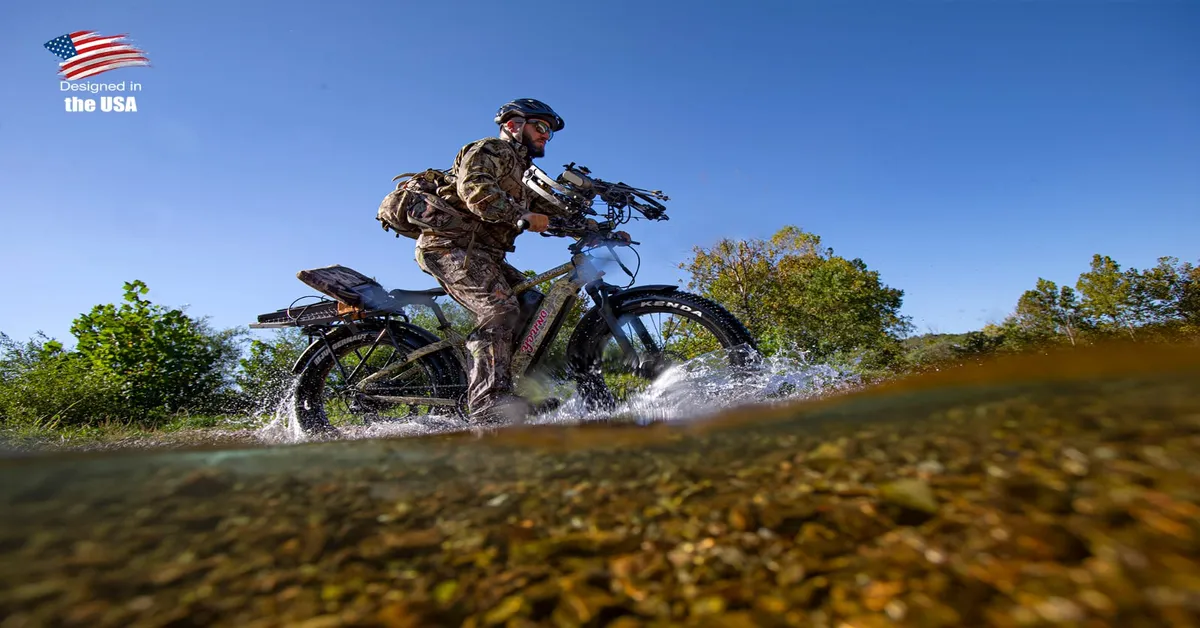Fat tire ebikes are increasingly popular due to their versatility, allowing riders to tackle diverse terrains from sand to snow. However, like any electric vehicle, they face certain challenges, and one of the most pressing issues is the fat tire ebike heat dissipation problem. Heat dissipation is critical to the performance and longevity of electric bikes, particularly in fat tire models, which tend to have bulkier structures and more demanding power requirements. In this article, we will delve into the complexities of the heat dissipation issue, its impact on the ebike’s performance, and solutions to mitigate the problem.
1. Introduction to Fat Tire Ebikes
Fat tire ebikes are specifically designed for off-road adventures, giving riders more stability and better traction on rough surfaces. These bikes feature wide tires, usually ranging from 3.7 to 5 inches, which are ideal for diverse terrains such as snow, sand, and mud. While these ebikes are built for durability and adventure, the increased weight and larger components require more energy, leading to higher heat production. This can exacerbate the fat tire ebike heat dissipation problem, which is a common concern among riders who use their bikes for extended periods or in challenging environments.
2. The Science Behind Heat Dissipation in Ebikes
Heat dissipation is the process of transferring heat away from electronic components to prevent overheating. In ebikes, key components like the motor, battery, and controller generate heat during operation. Effective heat dissipation is crucial for maintaining the performance and longevity of these components. When heat isn’t properly managed, it can lead to reduced efficiency, battery degradation, or even permanent damage to the motor and other electrical parts.
In fat tire ebikes, the bulkier frames, higher power consumption, and greater strain on the motor make heat dissipation more challenging than in traditional ebikes. This brings us to the core of the fat tire ebike heat dissipation problem.
3. Understanding the Fat Tire Ebike Heat Dissipation Problem
The fat tire ebike heat dissipation problem arises when the heat generated by the motor and battery during use isn’t effectively dispersed. This problem is more pronounced in fat tire models because of their increased power demands. Fat tire ebikes typically have more powerful motors, larger batteries, and additional weight due to the oversized tires. All of these factors contribute to higher heat production, and if this heat is not managed properly, it can lead to a host of issues, including battery drain, motor overheating, and reduced overall performance.
4. Factors Contributing to the Fat Tire Ebike Heat Dissipation Problem
Several factors contribute to the fat tire ebike heat dissipation problem, including motor size, battery efficiency, terrain, and riding conditions.
a. Motor Size and Power
Fat tire ebikes often have larger motors, which generate more power to handle rough terrain. The increased power output results in more heat production. Without adequate ventilation or cooling mechanisms, the motor can overheat, reducing its efficiency and lifespan.
b. Battery Efficiency and Temperature
Another significant contributor to the heat dissipation issue is the battery. Lithium-ion batteries, commonly used in fat tire ebikes, are prone to overheating, especially during long rides or when the bike is pushed to its limits. When the battery heats up, it not only affects its efficiency but can also degrade its cells over time.
c. Terrain and Riding Conditions
The type of terrain and riding conditions play a crucial role in the heat dissipation problem. Off-road terrains like sand, snow, or rocky paths put more strain on the motor and battery, causing them to generate more heat. Additionally, riding in hot climates exacerbates the fat tire ebike heat dissipation problem, as the external temperature makes it harder for the components to cool down.
5. Impact of the Fat Tire Ebike Heat Dissipation Problem on Performance
The fat tire ebike heat dissipation problem can have a range of impacts on the bike’s performance:
- Reduced Motor Efficiency: When the motor overheats, it operates less efficiently, reducing the power output and making it harder to traverse rough terrain.
- Battery Degradation: Overheating batteries lose their charge more quickly and degrade faster, shortening the overall battery life.
- Decreased Range: With reduced battery efficiency, the range of the ebike is limited, making long rides challenging.
- Potential Damage to Components: Prolonged heat exposure can cause permanent damage to the motor, battery, and controller, leading to expensive repairs or replacements.
6. Solutions to the Fat Tire Ebike Heat Dissipation Problem
Addressing the fat tire ebike heat dissipation problem requires a combination of design improvements and rider maintenance practices. Here are some effective solutions:
a. Improved Ventilation Systems
Adding better ventilation systems to the motor and battery housing can significantly reduce overheating. Manufacturers are increasingly designing ebikes with heat sinks and cooling vents to promote airflow and dissipate heat more efficiently.
b. Efficient Battery Management Systems
A Battery Management System (BMS) monitors and regulates the temperature of the battery. Advanced BMS technology can prevent overheating by cutting off power or reducing the energy flow when temperatures rise, thus protecting the battery and extending its lifespan.
c. Quality Heat-Resistant Materials
Using high-quality, heat-resistant materials for key components like the motor and battery casing can prevent heat build-up. Materials such as aluminum alloys or specialized plastics can help in transferring heat away from sensitive components, mitigating the fat tire ebike heat dissipation problem.
7. Maintenance Tips to Prevent Heat Build-up in Fat Tire Ebikes
Preventing heat build-up in your fat tire ebike requires consistent maintenance and careful riding practices. Here are some tips to help:
- Regularly Check the Motor and Battery: Ensure that the motor and battery are not overheating during rides. If they are, stop and allow them to cool down.
- Avoid Extreme Conditions: Try to avoid riding in excessively hot environments or pushing your bike to its limits for extended periods.
- Clean Vents and Heat Sinks: If your ebike has cooling vents or heat sinks, make sure they are clean and free of debris that could block airflow.
- Upgrade Your Battery: If your ebike is frequently overheating, consider upgrading to a more efficient battery with better heat management features.
8. The Future of Fat Tire Ebikes: Heat Dissipation Technology
As the popularity of fat tire ebikes grows, manufacturers are investing in better technologies to combat the fat tire ebike heat dissipation problem. Future developments may include advanced cooling systems, improved battery chemistry, and more efficient motors designed specifically for fat tire models.
Thermal management systems that actively cool the motor and battery are already being tested in some high-performance models. Additionally, smart sensors that monitor temperature in real time and adjust power output accordingly could become standard features in the next generation of ebikes.
9. FAQs About Fat Tire Ebike Heat Dissipation
Q1: Why does my fat tire ebike overheat so quickly?
A: Fat tir’e ebikes often have larger motors and batteries, which generate more heat. Overheating can occur if these components are not effectively cooled, especially during long rides or on rough terrain.
Q2: Can heat damage my ebike battery?
A: Yes, excessive heat can degrade battery cells, reducing its overall lifespan and efficiency. It’s important to monitor battery temperature and avoid overheating.
Q3: What can I do to prevent my motor from overheating?
A: Ensure your motor has adequate ventilation, avoid pushing your ebike to its limits for extended periods, and consider upgrading to models with better cooling systems.
Q4: Does riding in hot weather affect heat dissipation?
A: Yes, hot weather exacerbates the fat tir’e ebike heat dissipation problem because it makes it harder for the components to cool down naturally.
Q5: Are there any cooling accessories for ebikes?
A: Some manufacturers offer heat sinks, cooling fans, or advanced BMS technology to help with heat dissipation. Upgrading your ebike with these accessories can help prevent overheating.
10. Conclusion
The fat tir’e ebike heat dissipation problem is a significant issue that can affect the performance, efficiency, and longevity of your ebike. However, with the right knowledge, technology, and maintenance practices, this problem can be effectively managed. Riders should be aware of the factors that contribute to overheating, invest in ebikes with better thermal management systems, and maintain their bikes to ensure optimal performance. As the industry continues to evolve, we can expect future innovations to further mitigate the heat dissipation challenges in fat tir’e ebikes.







